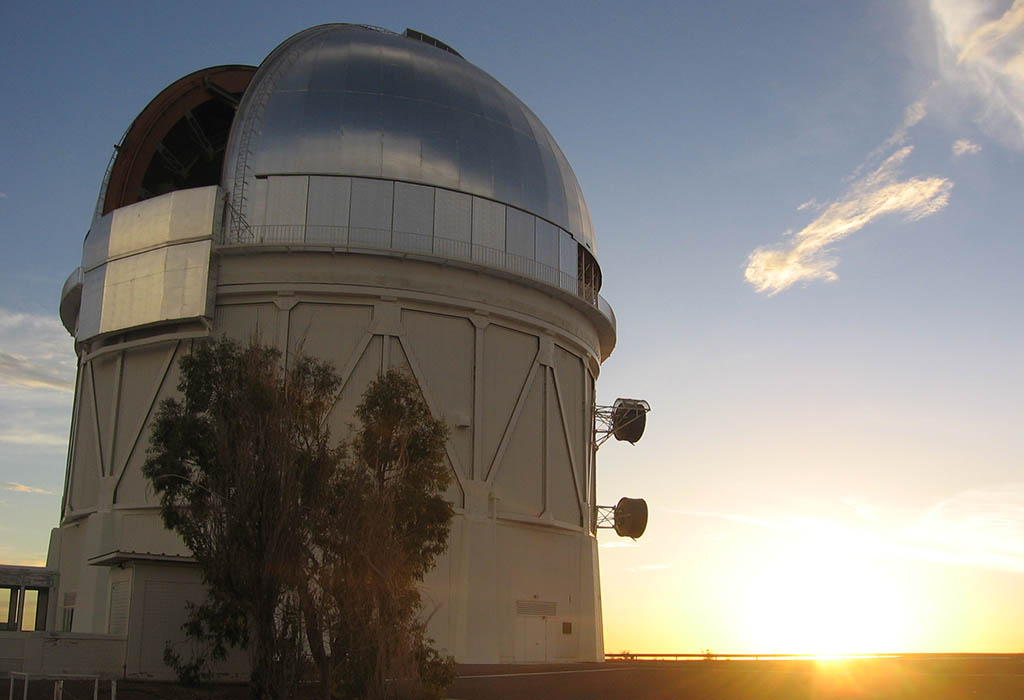Putting Einstein’s famous theory of relativity to the test
Are you wondering how we’re investigating the mysteries of dark energy? Australia features in two projects using the Anglo-Australian Telescope at Siding Spring Observatory near Coonabarabran, New South Wales: the Australian Dark Energy Survey (OzDES) and the 2-degree Field Lensing Survey (2dFLenS). Both projects measure how light is bent by the force of gravity in space to improve our understanding of how dark matter and dark energy behave.
The OzDES project goal is to measure the redshifts of tens of thousands of galaxies and the spectra of the radiation emitted by more than 3,000 supernovae (exploding stars). This will take 100 nights of telescope time over the duration of the five-year project. Considering that the study of around 52 supernovae led to a Nobel Prize-winning discovery, it’s pretty exciting to think of what questions might be answered after crunching the data from more than 3,000 exploding stars.
The 2dFLenS project has surveyed 100,000 galaxies to investigate the physics of gravity in space by examining how gravitational lensing affects the velocities and shapes of the galaxies.
Another ongoing project is the Dark Energy Survey, an international collaboration of more than 120 scientists from 23 institutions being conducted at the Cerro Tololo Inter-American Observatory in Chile. This team is taking pictures of the night sky over 525 nights using a purpose-built 570 megapixel camera (smartphones are usually between 8 and 16 megapixels), mounted on a 4-metre telescope.

This project intends to take measurements from 300 million galaxies, and the thousands of supernovae OzDES will analyse. The SkyMapper telescope at Siding Spring Observatory is also doing a complementary supernova survey. Using a combination of complementary methods, including analysis of Type Ia supernovae, baryon acoustic oscillations, galaxy clustering and weak gravitational lensing, the team’s primary mission is to investigate what is causing cosmic acceleration. They’ll be asking if Einstein’s theory of general relativity still holds true on cosmic scales, or do we need a new theory of gravity? Stay tuned. First results—a new map of dark matter throughout the universe—are out, with more due in 2018.





